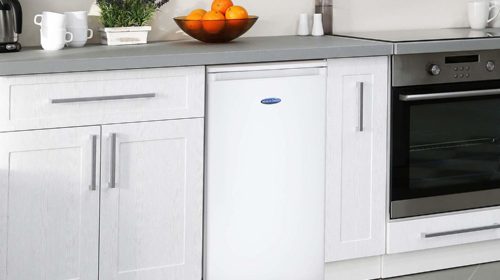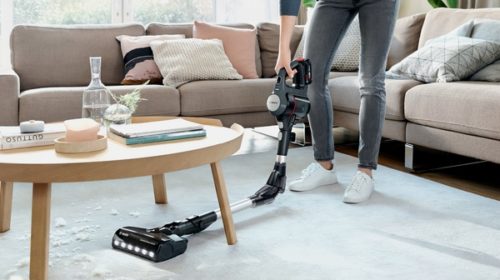Allergy Protection in Your Home
A quarter of UK households include at least one allergy or intolerance sufferer and a large proportion of these people suffer from respiratory allergies. These allergies include pollen from trees and grasses, house dust mite, moulds and pets such as cats and dogs. They can cause and inflame some conditions, such as: allergic rhinitis ( when seasonal this is called hay fever) which affects the nose and eyes, asthma which affects the lung, both rhinitis and asthma together and more rarely eczema or urticaria (hives) which affect the skin. As a common problem its good to know how to reduce and improve symptoms for those in your household who may suffer. Here are our top tips to help protect you in your home.
Pollen Allergy
Monitor pollen forecasts daily and stay indoors wherever possible when the count is high (generally on warmer, dry days). Rain washes pollen from the air so counts should be lower on cooler, wet days. Take these tips throughout the day to improve your allergies:
- Apply an allergen barrier balm around the edge of each nostril to trap or block pollens and wear sunglasses and a hat with a wide brim to keep pollen out of your face.
- Keep windows closed when indoors and invest in a good air filter if you suffer a lot indoors.
- If you do have to venture out when the count is high a good tip is to have a ‘dirty’ area in your hallway or outside where you can take your outer clothing and shoes off to stop dragging pollen in to the house. You can even place them straight in the washing machine to clean off pollen straight away.
- You can also shower and wash your hair after arriving home
- Don’t perform gardening tasks but if you must wear a mask.
- Avoid drying washing on a clothes-line outside use a tumble dryer instead.
Pet Allergies
First and foremost, if you know that you or one of your family members is allergic to pet hair then do not obtain any new pets and give away your any current pets. We know that it’s not always possible to give away that special member of the family so here is some extra tips to deal with pet allergies.
- Restrict pets to outdoors or to limited areas in the house, never let them in the bedroom and don’t let them lick hands or faces.
- Wash cats and dogs regularly, keep them healthy and well groomed. If returning from a walk during the spring and summer you should wipe your dog over with a damp cloth to remove pollen allergens as well.
- If possible, remove carpets from rooms where pets are kept and vacuum floors regularly. Any remaining carpets should be cleaned with a high-temperature steam cleaner and vacuumed regularly with a high-filtration (HEPA) vacuum-cleaner
- Clean all surfaces (including walls) regularly and wash all pet bedding and baskets regularly.
- You can invest in a good air filter to reduce allergen levels in the air, or ventilate rooms well.
Mould
Moulds flourish in damp environments and some homes unfortunately have these problems. Here are a few tips and tricks to reduce the impact of mould in your life. Ventilation is key.
- The wettest areas of a home are kitchen, bathroom and utility room, so make sure to clean these thoroughly. Keeping them well ventilated will help prevent mould growth. Pay particular attention to walls behind units and cupboards as the lack of ventilation often means that excess mould grows in these areas.
- Open windows and close internal kitchen and bathroom doors when cooking, showering or bathing to prevent steam entering other rooms. Keep bathroom surfaces as dry as possible.
- Clean mould from window frames and dry condensation.
- Do not let food decay, remove bins frequently. Clean and thoroughly dry problem areas such as refrigerator seals.
- Do not hang wet clothes inside or over radiators. Do not hang clothes in damp cupboards or pack clothes too tightly in wardrobes. Leave wardrobe doors ajar to ventilate the clothes. Make sure that your tumble dryer is vented outside during use, or use a condenser-dryer. Try not to dry damp clothing indoors, use a tumble dryer instead.
- Strip wallpaper from damp walls. Tackle any areas of dampness on walls etc.
- If using a dehumidifier, keep indoor humidity at 50% or less. Empty and clean the reservoir regularly
- Use high pressured high heat Steam to kill mould.
Dust Mites
Dust mites are everywhere but we can take several steps to reduce their numbers and help allergy sufferers. Dust mites and mould both love damp and warm areas.
- Use allergen-proof barrier covers on all mattresses, duvets and pillows. Make sure they are tested and approved.
- Wash all bedding that is not encased in barrier covers (e.g. sheets, blankets) every week. Washing at 60 degrees centigrade or above will kill mites. House dust mite allergen dissolves in water so washing at lower temperatures will wash the allergen away temporarily, but the mites will survive and produce more allergen after a while. Use light washable cotton curtains, and wash them frequently.
- Allergic children should not sleep in the bottom bunk bed where allergen can fall onto them.
- If possible remove all carpeting in the bedroom. Vacuum all floors regularly with a high-filtration vacuum cleaner or use a steam-cleaner to kill mites effectively. Remove extra fabrics from the room where dust mites can survive such as cushions curtains, pelmets and rugs, those that cannot be removed should be vacuumed frequently.
- Washable stuffed toys should be washed as frequently and at the same temperature as bedding. Alternatively, if the toy cannot be washed at 60 degrees place it in a plastic bag in the freezer for at least 12 hours once a month and then wash at the recommended temperature.
For more information
Visit Allergy UK





